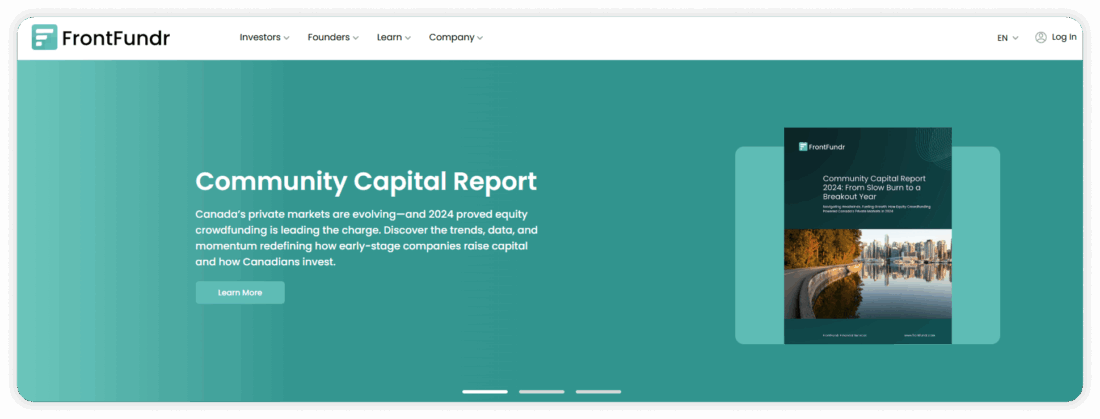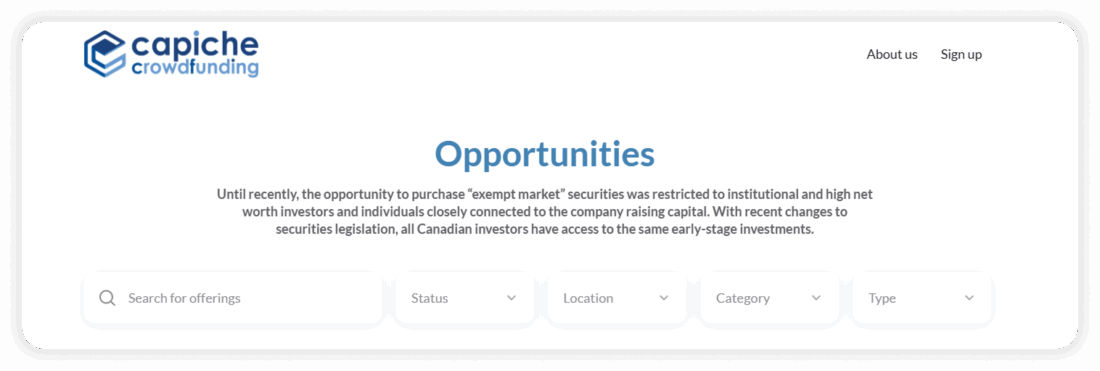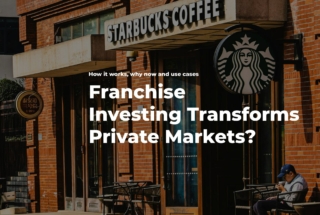Self-Certified Investors in Canada: What It Means for Crowdfunding and How to Qualify
No time to read? Let AI give you a quick summary of this article.
On September 25, 2025, the Canadian Securities Administrators (CSA) proposed a new rule — Multilateral Instrument 45-111 (MI 45-111) — to create a unified self-certified investor exemption across participating provinces and territories. This exemption would allow more individuals to invest in startups and private offerings without meeting the high wealth or income thresholds required of accredited investors.
According to the National Crowdfunding & Fintech Association (NCFA), this change could reduce fundraising costs and help startups attract a broader base of investors. The goal is to make it easier for small businesses to raise capital while maintaining strong investor protections through clear rules and safeguards.
If adopted, MI 45-111 could open new opportunities for startups, crowdfunding platforms and experienced investors who fall short of accredited investor criteria.
In this article, we’ll explain what a self-certified investor is, why this proposal represents a major shift for Canada’s private investing and crowdfunding landscape and highlight some of the platforms already operating in the space.
What you will learn in this post:
What is a self-certified investor?
A self-certified investor is an individual who, without meeting accredited investor financial thresholds, confirms that they possess sufficient financial knowledge or experience to understand investment risks and formally acknowledges those risks through a self-certification process.
In simpler terms: it’s someone who may not be wealthy enough to qualify as an accredited investor but can still invest in certain private offerings because they’ve proven they understand how investing works and have accepted the risks involved.
How to qualify as a self-certified investor
Under the proposed MI 45-111 framework, a self-certified investor must confirm that they meet at least one (or possibly more) qualifying criterion, such as specific education, a professional designation, or relevant experience, and acknowledge that they understand the associated investment risks.
Here are the main components of qualification:
- Educational/professional credentials: For instance, holding a professional designation such as Chartered Financial Analyst (CFA), Chartered Business Valuator (CBV), Chartered Professional Accountant (CPA), Chartered Investment Manager (CIM), Certified Financial Planner (CFP), or similar.
- Academic degrees in relevant disciplines: For example, an accredited MBA, DBA, PhD, or master’s degree with a specialization in finance or economics; or an undergraduate business/commerce/finance degree plus relevant employment experience.
- Relevant employment or operational experience: At least five years of management, engineering, or product development experience in the same sector as the issuer, or being an employee of a venture-capital/private equity firm with one year of participation in investments, or being a founder/director of an early-stage business with minimum revenues (e.g., C$500,000) in the prior year.
- Pass a qualifying examination: For example, one can pass the Canadian Securities Course exam, the Exempt Market Products exam, or the U.S. Series 7 plus Canadian New Entrants Course.
The proposal includes several measures to keep investors safe. Self-certified investors would have a yearly investment limit of C$50,000 under this exemption, even if they invest in several different companies. They have to confirm that these investments can be risky, hard to sell, and may not include the same level of information as a prospectus. Issuers and crowdfunding platforms would be required to keep detailed records.
In practice, someone with a professional designation or solid management or investment experience could qualify. They would fill out a self-certification form and follow the annual limit. This approach opens opportunities for knowledgeable investors who may not meet the income or wealth levels required for accredited status but still understand how to assess investment risk.
What it means for crowdfunding and private offerings
Why does this matter for crowdfunding? Because the way capital raising works in Canada has long been shaped by fragmented regulations and limited access. Each province and territory sets its own securities rules, which makes it harder for issuers and platforms to operate nationwide. The CSA’s proposal could simplify this landscape and make participation broader and more consistent across Canada.
Here’s why the new proposal is important:
- Broader investor base: With the SCI category, more individual investors can participate in private placements and exempt distributions, not just those who meet accredited thresholds. The NCFA described the change as one that will potentially allow more investors to participate in fundraising efforts.
- Lower costs for issuers: A harmonized national instrument would reduce the burden on issuers who now have to handle different provincial regulations.
- Capital formation for startups and SMEs: With a larger pool of eligible investors, early-stage companies may find it easier to raise capital through private offerings, platforms, or crowdfunding-style deals. The investment cap of C$50,000 limits downside risk, but still allows meaningful participation.
- Platforms gain flexibility: Crowdfunding platforms or exempt market dealers that facilitate private offerings might see increased deal flow, more participants, and simplified compliance if provincial rules align.
- Mid-level sophisticated investors gain access: Individuals who may not have five or six-figure incomes or seven-figure net worths but do have relevant credentials or experience can now potentially invest in exempt offerings. That allows “knowledge-based” access rather than purely wealth-based.
Challenges and Limitations
No reform is without drawbacks. Here are some of the major difficulties that the proposed SCI regime and broader harmonization face:
- Not fully federal: Even though the proposal is called “Multilateral,” each province and territory must choose to adopt it. Some may decide not to, or they might adjust the rules. For example, British Columbia and Quebec are not part of the initial version of MI 45-111.
- Investor risk also remains. Even with a cap and certification, investing in early-stage or private companies is risky. These investments are hard to sell, have limited disclosure, and can result in total loss. The AMF’s crowdfunding guide reminds investors that, without prospectus protections, they should be prepared for that possibility.
- Investor suitability & knowledge: The certification process itself raises questions. Because investors self-certify, critics worry this might be weaker than full accreditation. Some people might overestimate their knowledge or underestimate the risks involved.
- There are also practical limits. The annual cap of C$50,000 per investor could restrict how much startups can raise, especially if the overall pool of qualified investors remains small.
While this proposal is an important step forward, it won’t remove all the risks or hurdles tied to raising capital.
Examples of crowdfunding platforms in Canada
Several platforms already operate under Canada’s crowdfunding and exempt market frameworks. They provide a practical context for how the SCI regime might operate.
Equivesto Canada Inc

Equivesto is registered as an Exempt Market Dealer across Canadian provinces. The platform typically sets minimum investment amounts starting around C$100, depending on the offering. Maximum limits are determined by the investor’s qualification (retail, eligible, or accredited). Equivesto supports both equity crowdfunding and private placements.
FrontFundr

FrontFundr is listed as an exempt market dealer in several provinces. The platform allows both accredited and non-accredited investors to invest directly in early-stage startups, growth companies, and impact-driven ventures. Minimum investments typically start at around C$250, this is why it is accessible to a wide range of investors. FrontFundr provides detailed disclosure documents and conducts due diligence on issuers to ensure compliance with securities laws.
Capiche Crowdfunding

Capiche Crowdfunding is also listed under the AMF’s portal registry, which means it operates as a recognized equity crowdfunding platform in compliance with Quebec’s securities regulations. The platform focuses on helping startups, small and medium-sized enterprises (SMEs), and social impact ventures raise capital from both accredited and retail investors. Minimum investment amounts generally start at around C$100, which is affordable for a broader investor base.
Launch a crowdfunding platform in Canada with LenderKit
As the crowdfunding market in Canada keeps growing and maturing, it might be the right time to launch your own crowdfunding or investment platform.
LenderKit provides a ready-made solution that works across North America, Europe, UK and the MENA region, so you can consider both – local and international launch.
The white-label crowdfunding software comes with in-built functionality, integrations and compliance features required to equip you for a smooth launch and sustainable operations.
With LenderKit, you can onboard investors, create and manage crowdfunding and investment campaigns, raise capital for your clients or your internal projects — such as real estate or startups. If you’re interested to learn more about it, don’t hesitate to reach out to us.




